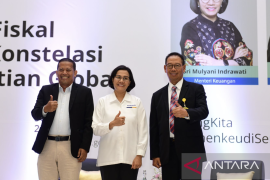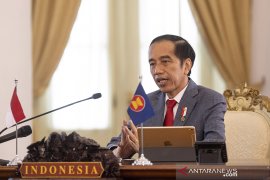"For the labor sector, we do not need to harbor worries about quantity, but the quality needs to be considered," he stated while opening the 9th Annual International Forum on Public Policy and Economic Development (AIFED) in Nusa Dua, Bali, on Thursday.
Nazara remarked that the improvement in human resources has become one of the priorities during the second term of the administration of President Joko Widodo (Jokowi).
During Jokowi's second term during the 2019-2024 period, human resource development was a priority to support the Indonesian economy, in addition to continuing infrastructure and bureaucratic reforms as well as simplifying regulations.
In his presentation, Suahasil highlighted that human resources were strengthened by ensuring health since the time of pregnancy to prevent stunting and to improve the quality of education.
Related news: Jokowi pledges to enable Indonesia to get out of middle income trap
In the State Budget (APBN) 2020, from state expenditure of Rp2,540 trillion, five percent is for health and 20 percent for education.
The government has also offered tax incentives to businesses that contribute to training human resources.
Thus, Indonesian human resources would possess the ability and acquire technology transfer from foreign and domestic companies operating in the country.
In his presentation, Suahasil also quoted the data of the Central Statistics Agency (BPS) in 2015 as saying that the quality of labor in Indonesia was still low.
According to the statistics, some 60 percent of workers had educational backgrounds of elementary school (SD) and junior high school (SMP).
Hence, boosting labor productivity in the manufacturing sector was deemed crucial since the sector generated high income or productivity.
The Ministry of Finance projects that in 2024, some 47 percent of Indonesia’s population of 319 million will belong to the productive age group.
The finance ministry projects that Indonesia will emerge from the trap of low-income countries in 2036, with per capita income reaching 16,877 per US dollar.
In 2015, Indonesia's per capita income reached 3,377 per US dollar, and in 2020, it is estimated to reach 4,546 per US dollar. Related news: Encouraging middle class key to escaping middle income trap
Translator: Dewa Ketut, Azis Kurmala
Editor: Rahmad Nasution
Copyright © ANTARA 2019












